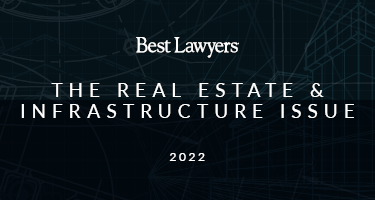The election of Donald Trump spurred great excitement in the building industry on the presumption that the new administration—which knew a thing or two about big construction projects—would follow through on candidate Trump’s promise to significantly increase government spending on American infrastructure, which Republicans and Democrats alike have acknowledged is in need of a major overhaul. Conventional wisdom held that a new infrastructure bill would be one piece of significant legislation that could garner bipartisan support.
It was therefore disappointing when President Trump proposed no such plan in his initial round of legislative trial balloons. Not until February 2018 did he do so, pitching a plan that would spend a reported $1.5 trillion on infrastructure. Although details were scant, the plan targeted $200 billion in federal funding toward projects with streamlined design, permit and construction rules; created sweeteners to entice state and local governments to contribute their own resources; and established tax incentives in the hope of encouraging $1 trillion of private investment in public works.
Despite high hopes, to date Congress has failed to pass major infrastructure legislation, with the parties disagreeing over the balance of federal spending and private investment. There is also discord within the Republican caucus concerning the bill’s funding, with party leadership loath to raise taxes to help finance it in the wake of last year’s tax cuts. Current speculation is that the details won’t be hammered out until after the midterm elections, with no action on any front until early 2019.
In the meantime, the Trump administration has sent mixed signals about its commitment to the country’s infrastructure. On the positive side, the president has proposed changes to the environmental-permitting process, including a provision called “one agency, one decision,” which would assign a single federal agency to coordinate permitting decisions, with a goal of completing all permitting in no more than two years.
Additionally, this past May the Federal Transit Administration issued a “Final Rule” to allow grantees of federal transportation dollars to identify FTA regulations or procedures that impede private investors or public-private partnerships, and enable those entities to seek their waiver or modification. Congress is also considering increasing the amount of low-interest federal loans available to the states for critical water projects through the Environmental Protection Agency’s Water Infrastructure Finance and Innovation Act.
Despite high hopes, to date Congress has failed to pass major infrastructure legislation.
On the negative side of the ledger, the administration has proposed a cap on the Federal Highway Trust Fund that could effectively reduce financing for highway projects starting in 2020. This piecemeal approach is a far cry from the comprehensive program advanced by President Trump during the 2016 campaign.
Although there has been little progress on the federal side, states, counties, cities, and other local governments appear to be embracing private participation in infrastructure development. Currently 38 states, the District of Columbia, and Puerto Rico have some form of public-private partnership statutory authorization in place. Others are considering enacting or broadening their own P3 laws. Several more, including Florida and Virginia, have created state offices to promote and educate local agencies about the P3 project-delivery model.
A paper published last year by AIG made the case that the United States is the world’s largest emerging market for public-private partnerships. Indeed, P3 investment is still relatively new in the U.S., but seemingly every day the building-trade media report on additional resources being devoted to it.
Consider Los Angeles, where Mayor Eric Garcetti has announced that the city will significantly expand its public-transit system via “28 by ’28”: a plan to complete 28 major road, transit, and bicycle projects before it hosts the 2028 Summer Olympics, with P3 projects a major component. L.A. recently awarded two big aviation-related P3 projects: a $4.9 billion “people mover” train and the world’s largest consolidated car-rental facility at LAX airport.
Similar commitments have been made throughout the U.S., with a number of megaprojects underway—the reconstruction of LaGuardia Airport in New York perhaps chief among them. This “pipeline” of projects is critical to attracting additional private investment to help create momentum for broad public-agency acceptance of P3 projects.
P3 is not a panacea, of course. The federal government simply must step up as well. What form this might ultimately take is anyone’s guess, but the clock is ticking on the Trump administration and Congress to devise a plan to remedy years of infrastructure neglect. This will be difficult, no question, but such direct investment is a win-win—for the country as a whole and, politically, for both sides of the aisle. It is long past time to set partisan politics aside and make reasonable compromises to enact a comprehensive program to restore U.S. infrastructure to its rightful place among the best in the world.
------------
Chris Roux is co-leader of Alston & Bird’s Construction & Government Contracts Group. He represents owners, contractors, and other construction professionals on public and private projects typically involving infrastructure, transportation, energy, industrial, commercial, and residential works of improvement. He provides construction counseling to clients on the myriad issues that arise in the construction business, including project planning and procurement, drafting and negotiating contracts, and claims avoidance. Chris has worked on some of the largest construction claims matters in the U.S.






























